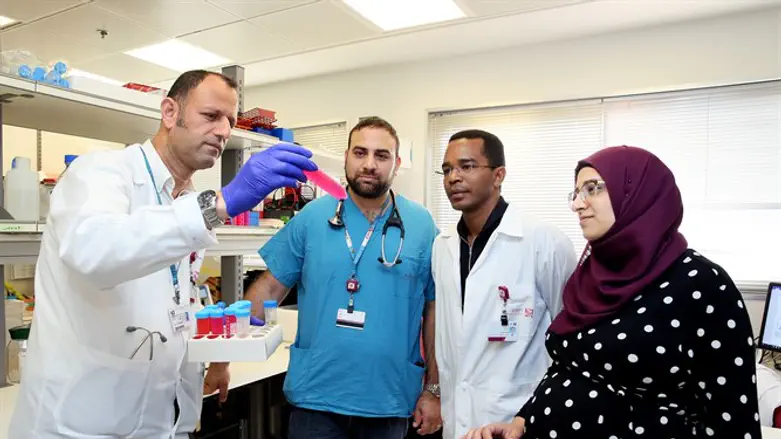
Rambam Hospital physicians discovered that acute kidney injury is a common complication of near-drownings, due to lack of oxygen and the fight-or-flight response.
Their research points to men being at highest risk.
According to the World Health Organization (WHO), drowning is the third leading cause of accidental death globally, with males especially susceptible. Drownings along Israel's Mediterranean beaches occur frequently, with approximately 60 people drowning annually - more than in other Mediterranean countries. This summer's recent surge of fatal drownings brings home this dire statistic.
Physicians from Rambam Health Care Campus observed that a relatively high number of nearly-drowned patients developed a sudden reduction in kidney function within days of hospital admission, with potentially fatal consequences.
The kidneys are critical for health, removing wastes from the body while maintaining a healthy balance of water, salts, and minerals in the blood.
In 2016, a 31-year-old man who had been submerged in seawater for four minutes arrived at Rambam with water in his lungs, respiratory distress, an elevated heart rate, low blood oxygen concentration, and low phosphate levels. He subsequently developed acute kidney injury (AKI). This case study led researchers to investigate the frequency of AKI in near-drowning victims, its clinical characteristics, warning signs, and causes.
The research was led by Professor Mogher Khamaisi, a senior physician in the Department of Internal Medicine (D) and a member of Rambam's Clinical Research Institute. Rambam physicians Drs. Yuri Gorelik and Said Darawshi, also from the Department of Internal Medicine (D), and Hiba Yaseen from the Institute of Diabetes and Metabolism, worked with Prof. Khamaisi on the study, together with Samuel Heymanat, who serves as Head of the Department of Medicine at Hadassah Hebrew University in Jerusalem.
The study is the largest and most comprehensive ever done on the mechanism of kidney damage in near drowning-patients immersed in seawater. Previous studies only looked at a few patients.
The Rambam physician scientists reviewed the medical records of 95 Rambam patients who nearly drowned in the Mediterranean Sea and were treated at the hospital between 2000-2017.
Forty-three patients (45 percent) developed AKI, with 17 reaching an advanced stage of disease (stage 2/3) as indicated by reduced urine output and a high increase in creatinine levels in the blood. Creatinine levels normalized within 120 hours in the stage 2/3 group and within 72 hours in the stage 1 group. Patients with stage 2/3 AKI were more likely to require mechanical respiration and treatment in an intensive care unit (ICU) and had a higher mortality rate, often from multi-organ failure.
The researchers concluded that AKI is a common complication of near-drowning associated with increased hospital mortality, and that it may be more common in males.
The main causes of kidney damage appear to be a temporary lack of oxygen, combined with the victims' physiological fight-or-flight response of increased heart rate, very high blood sugar levels, constriction of kidney blood vessels, reduced potassium levels, and an increased demand for oxygen.
The researchers recommend further studies of near-drowning patients at risk for developing AKI, as well as treating and monitoring patients by restoring oxygen levels throughout the body, maintaining proper dilation of kidney blood vessels, and other medical practices to prevent kidney complications.